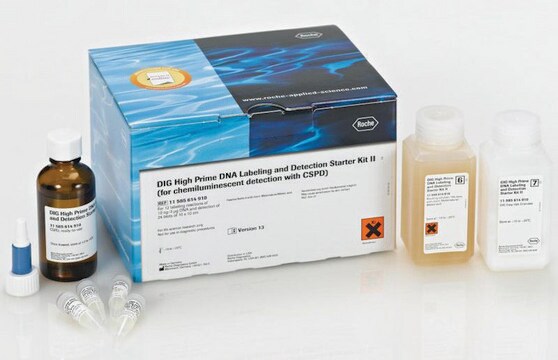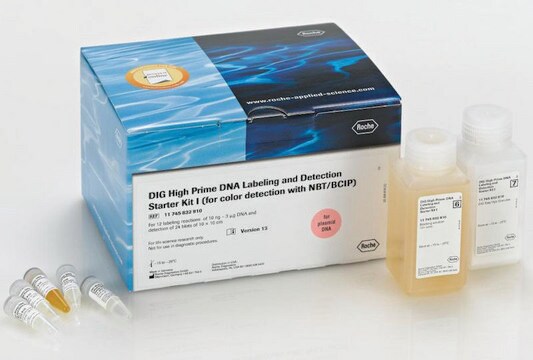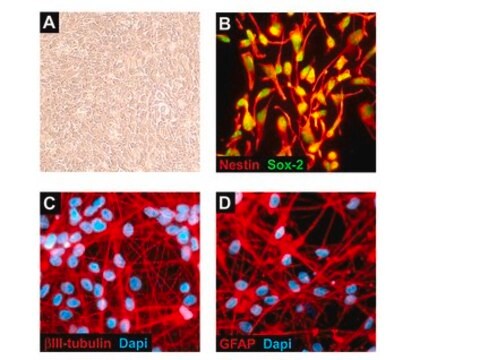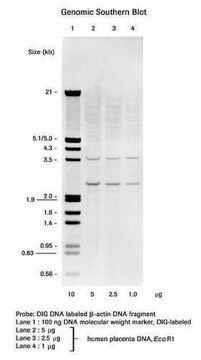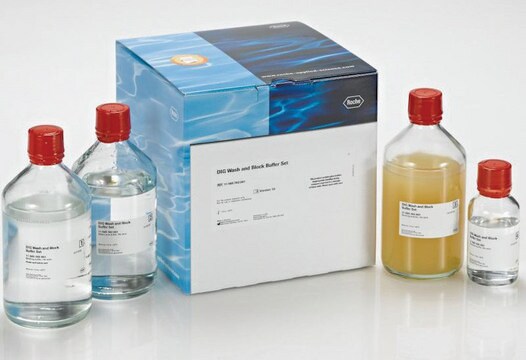LA1-5s
6041204, human nerve, Fibroblast-like
Faça loginpara ver os preços organizacionais e de contrato
About This Item
Código UNSPSC:
41106514
Produtos recomendados
Nome do produto
LA1-5s, 06041204
fonte biológica
human nerve
modo de crescimento
Not specified
cariótipo
Not specified
morfologia
Fibroblast-like
produtos
Not specified
receptores
Not specified
técnica(s)
cell culture | mammalian: suitable
doença(s) relevante(s)
cancer
Condições de expedição
dry ice
temperatura de armazenamento
−196°C
Origem de linhagem celular
Human Neural Crest-Derived Non-Neuronal Progenitor
Descrição de linhagem celular
LA1-5s is a clonal subline of the cell line LA-N-1 which was established by Seeger et al., (1977) from the primary site of a noncatecholamine-producing neuroblastoma of a 3-year-old female with clinical Stage IV neuroblastoma. The LA1-5s culture consists of large, flat, and tightly adherent cells. They are precursors of Schwann cell/glia/melanocyte lineages arising from the neural crest. This cell line is not tumourigenic in nude mice at a 1,000,000 cell inoculum. The cells can transdifferentiate to a neuroblastic phenotype. The N-myc gene has been reported to be amplified but exhibits very low expression.
LA-N-1 (Sigma catalog number 06041201), LA1-55n (Sigma catalog number 06041203) and LA1-5s (Sigma catalog number 06041204) have been shown to originate from the same patient by STR profiling.
LA-N-1 (Sigma catalog number 06041201), LA1-55n (Sigma catalog number 06041203) and LA1-5s (Sigma catalog number 06041204) have been shown to originate from the same patient by STR profiling.
Meio de cultura
EMEM (with non-essential amino acids) and Ham′s F12 (1:1 mixture) + 2 mM Glutamine + 10% Fetal Bovine Serum (FBS)
Rotina de subcultura
For routine maintenance, split cultures every 2-3 weeks at a 1:10 to 1:100 ratio; 8% CO2; 37 °C. The cells are large, flat, fibroblast-like cells that adhere strongly to the substrate. They form a swirling monolayer with no mounding or multilayering when in culture for only a short time, but will increase in density in the stationary phase as the culture is maintained. The cells can be removed from the substrate by rinsing with PBS, then incubating with EDTA/trypsin (at room temperature). Cells will detach in 5-10 minutes. Cells will reattach within several hours after seeding into a new flask. Population doubling time is approximately 2 days. Cells grow best and are most adherent on a plastic substrate in medium at a pH of 6.9-7.2; they do not tolerate more alkaline pH well. Cultures hold well at high density with periodic medium changes, but may also give rise to neuroblastic variants.
Outras notas
Additional freight & handling charges may be applicable for Asia-Pacific shipments. Please check with your local Customer Service representative for more information.
Escolha uma das versões mais recentes:
Certificados de análise (COA)
Lot/Batch Number
Lamentamos, não temos COA para este produto disponíveis online no momento.
Se precisar de ajuda, entre em contato Atendimento ao cliente
Já possui este produto?
Encontre a documentação dos produtos que você adquiriu recentemente na biblioteca de documentos.
Nossa equipe de cientistas tem experiência em todas as áreas de pesquisa, incluindo Life Sciences, ciência de materiais, síntese química, cromatografia, química analítica e muitas outras.
Entre em contato com a assistência técnica

